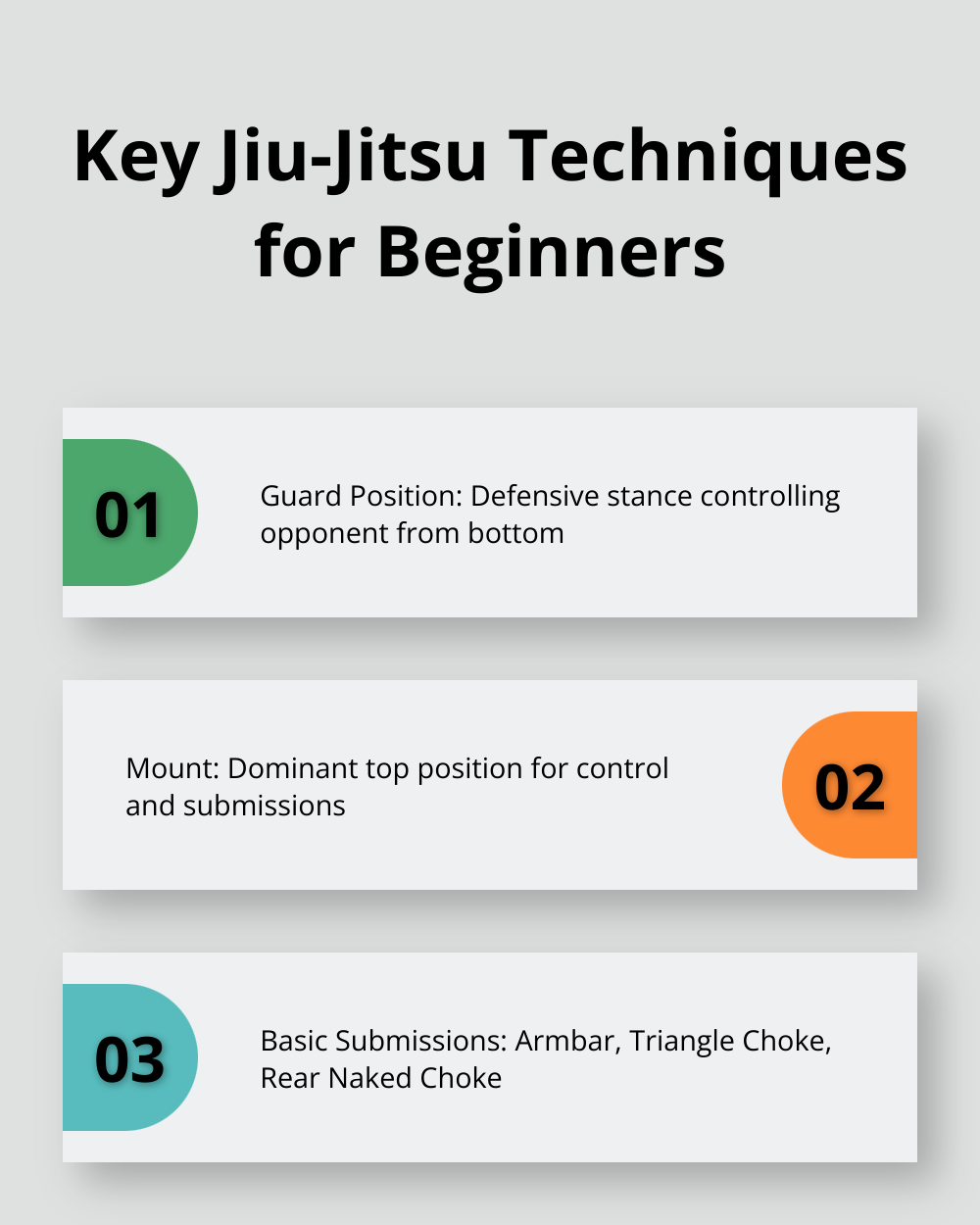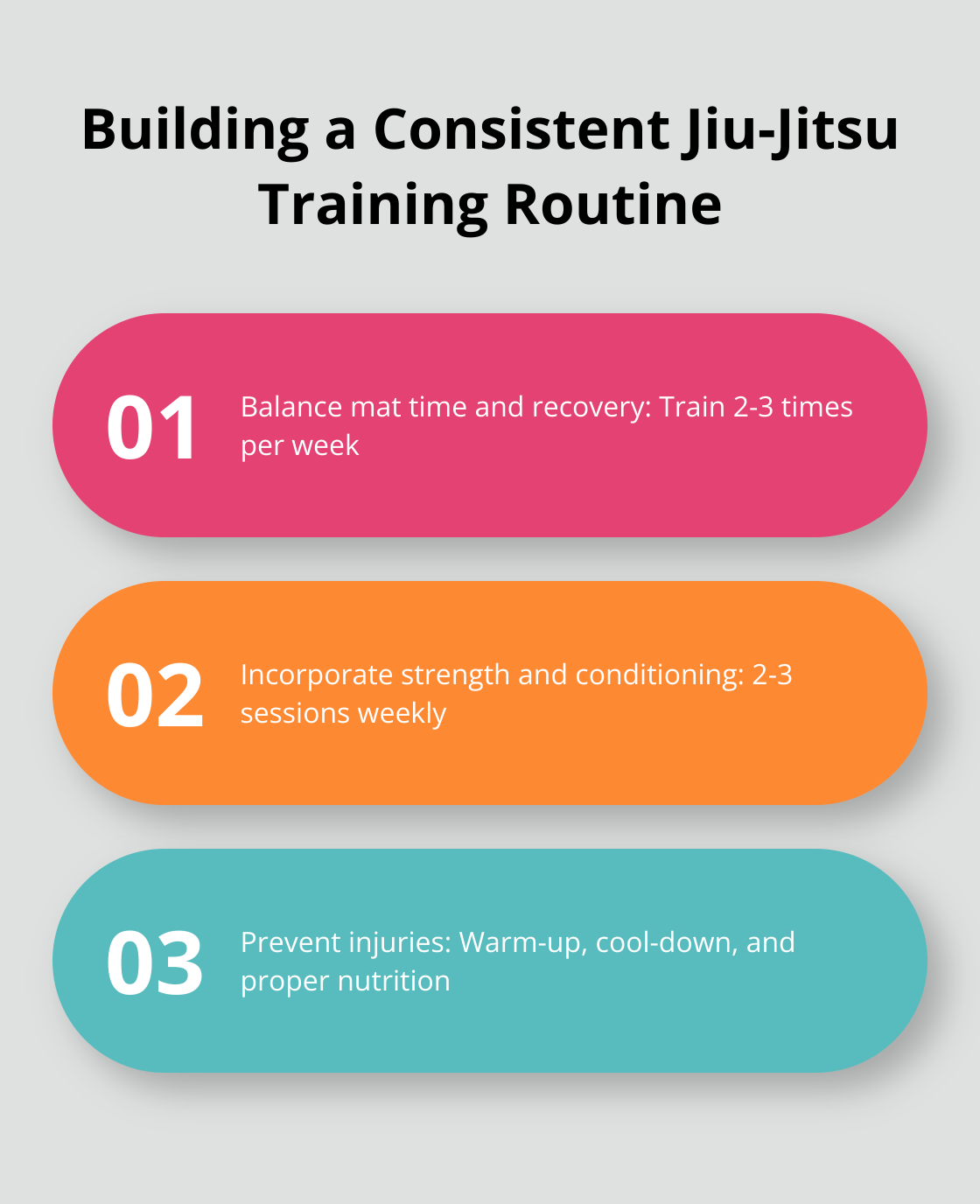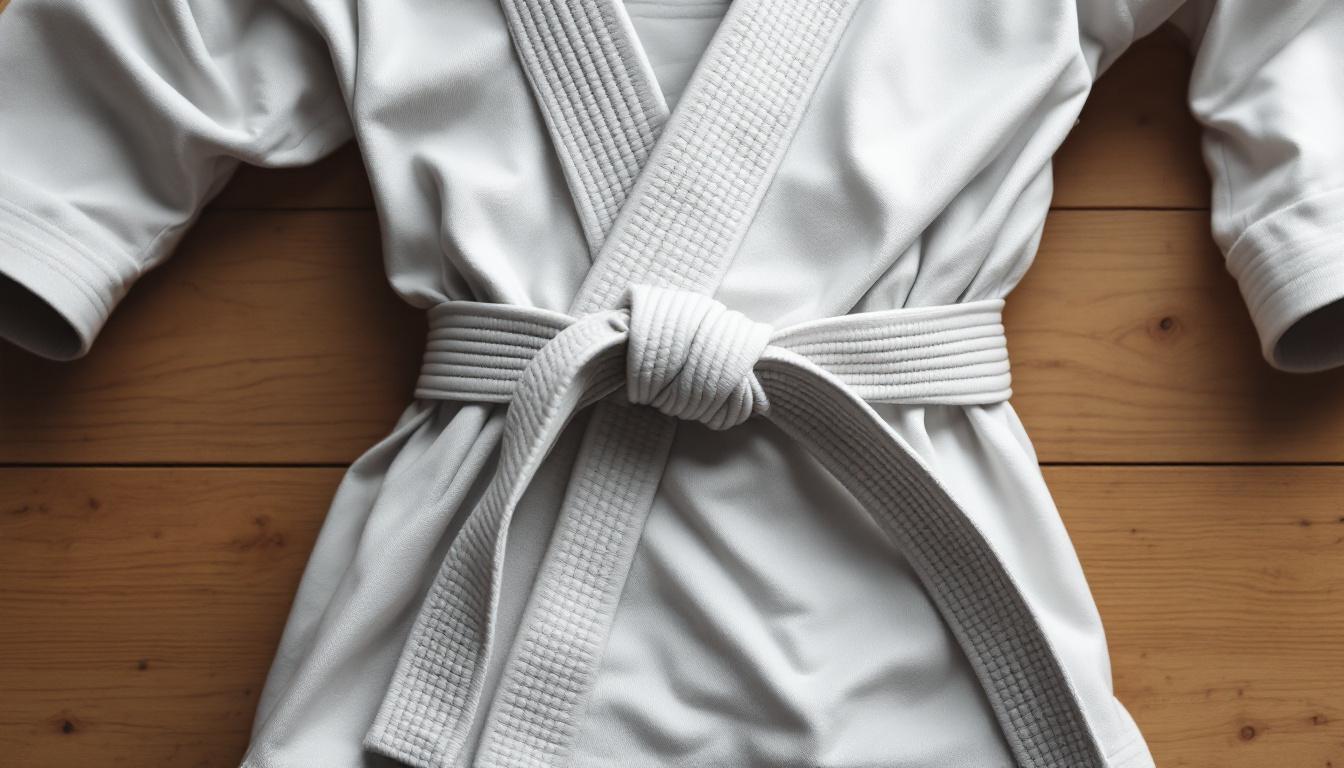Starting your Brazilian Jiu-Jitsu journey can be overwhelming, but we at Jiu jitsu are here to guide you every step of the way.
From learning how to tie a Jiu-Jitsu belt to mastering fundamental techniques, this beginner’s guide will set you on the path to success.
We’ll cover essential gear, key techniques, and tips for building a consistent training routine that will help you thrive in this challenging martial art.
What Gear Do You Need for Jiu-Jitsu?
The Essentials: Gi and Belt
Your primary investment in Jiu-Jitsu is the Gi (the traditional uniform). It includes a jacket, pants, and a belt. We recommend a lightweight, pearl-weave Gi for beginners. This fabric provides durability and a slightly textured feel, which is ideal for frequent training. Start with a white Gi, as most academies universally accept it.
Your belt signifies your rank. As a beginner, you’ll start with a white belt. Make sure it’s the correct length – when tied, the ends should hang about 6-8 inches (15-20 cm).
Protective Equipment
While Jiu-Jitsu is relatively safe, some protective gear can prevent minor injuries:
- Mouthguard: This protects your teeth during sparring.
- Rash guard: Wear this under your Gi to prevent skin irritation.
- Athletic cup: This is optional but recommended for male practitioners.

Gi vs No-Gi: Understanding the Difference
No-Gi Jiu-Jitsu doesn’t require a traditional uniform. Instead, you’ll need:
- Rash guard or tight-fitting t-shirt
- Grappling shorts or spats (compression leggings)
Many practitioners enjoy both styles. We suggest you start with Gi classes to build a strong foundation in traditional techniques.
Quality Equipment Sources
The quality of your Jiu-Jitsu gear matters. Poorly made equipment can hinder your performance and wear out quickly. Here are some reliable options:
- Local martial arts stores: These offer personalized fitting and immediate availability.
- Online retailers: You’ll find a wider selection, often at competitive prices. Popular brands include Fuji, Tatami, and Venum.
- Your academy: Many schools offer high-quality gear on-site.
When shopping, prioritize comfort and durability over flashy designs. A well-fitting Gi will last longer and enhance your training experience.
Now that you know what gear you need, let’s move on to the fundamental techniques you’ll learn as a beginner in Jiu-Jitsu.
How to Master Fundamental Jiu-Jitsu Techniques
The Guard Position: Your First Line of Defense
The guard position forms the cornerstone of Jiu-Jitsu defense. When you’re on your back with your opponent between your legs, you control the situation. To maintain an effective guard:
- Pull your knees close to your chest
- Control your opponent’s posture (grip their collar or sleeves)
- Use your legs to control their hips and prevent passing
Practice transitions between closed guard (legs locked around your opponent) and open guard (legs not locked) to improve your flexibility and control.
The Mount: Dominate from the Top
The mount puts you in a position of power, straddling your opponent’s torso. To maintain a strong mount:
- Keep your hips low and press your weight on your opponent’s chest
- Grip their collar or control their arms to limit movement
- Squeeze their ribs with your knees for balance
From the mount, you can execute basic submissions like the armbar or cross-collar choke (effective techniques for beginners to learn).
Escaping Bad Positions: Turn Defense into Offense
Learning to escape disadvantageous positions boosts your confidence and keeps you calm under pressure. Focus on these key escapes:
- Side control escape: Bridge and shrimp to create space, then recover guard
- Mount escape: Trap an arm and leg, then bridge and roll
- Back escape: Protect your neck, then turn into your opponent to recover guard
Practice these escapes regularly to improve your overall game.
Submissions: Finish the Fight
As a beginner, focus on mastering these fundamental submissions:
- Armbar from guard: Control your opponent’s arm and use your hips to hyperextend their elbow
- Triangle choke: Use your legs to create a figure-four around your opponent’s neck and arm
- Rear naked choke: Apply pressure to the carotid arteries from behind your opponent
These techniques (when practiced safely) form the basis of your offensive arsenal.

Drilling for Success: Repetition is Key
Consistent practice of these fundamental techniques will significantly improve your Jiu-Jitsu game. Try to drill each technique 50-100 times per session. This repetition builds muscle memory and helps you execute moves instinctively during live sparring.
Now that you’ve learned about fundamental techniques, let’s explore how to build a consistent training routine that will accelerate your progress on the mat.
How to Build a Consistent Jiu-Jitsu Training Routine
Balance Mat Time and Recovery
Consistency propels progress in Brazilian Jiu-Jitsu. Training more frequently can help to build up the necessary muscle conditioning and reduce the risk of injury. Additionally, training BJJ once a week may be insufficient for optimal progress. A well-structured training routine improves skills and minimizes burnout and injury risks. For beginners, train Jiu-Jitsu 2-3 times per week. This frequency allows your body to adapt to grappling’s physical demands while providing recovery time. As you progress, increase your training sessions to 4-5 times per week.
Include at least one rest day between training sessions for body recovery. On these days, perform light activities like stretching or yoga to maintain flexibility and prevent stiffness.
Incorporate Strength and Conditioning
Supplement your Jiu-Jitsu training with strength and conditioning workouts to enhance mat performance. Try 2-3 strength training sessions per week, focusing on compound exercises that mimic grappling movements:
- Deadlifts and squats for overall strength
- Pull-ups and rows for grip strength
- Turkish get-ups for core stability and mobility
For conditioning, high-intensity interval training (HIIT) improves cardiovascular endurance and simulates Jiu-Jitsu match intensity.
Prevent Injuries and Optimize Recovery
Injury prevention maintains a consistent training routine. Always warm up before class and cool down afterward. Perform mobility exercises targeting the hips, shoulders, and spine to improve flexibility and reduce strain risks.
Proper nutrition supports recovery. Consume a balanced meal with protein and carbohydrates within 30 minutes after training to replenish energy stores and support muscle repair. Stay hydrated throughout the day.
Quality sleep is essential for recovery. Try to get 7-9 hours of sleep per night.
Create a Sustainable Schedule
Design a weekly schedule that accommodates your Jiu-Jitsu classes, strength training, and recovery days. For example:
- Monday: Jiu-Jitsu class
- Tuesday: Strength training
- Wednesday: Rest day (light stretching)
- Thursday: Jiu-Jitsu class
- Friday: HIIT workout
- Saturday: Jiu-Jitsu class
- Sunday: Rest day (yoga or mobility work)
This balanced approach allows for consistent progress while minimizing overtraining risks.

Track Your Progress
Monitor your Jiu-Jitsu journey by keeping a training log. Record techniques learned, sparring experiences, and physical improvements. This practice helps identify areas for improvement and motivates continued effort (especially during challenging periods).
Final Thoughts
Your Brazilian Jiu-Jitsu journey requires dedication, consistency, and patience. We covered essential gear, fundamental techniques, and the importance of a consistent training routine. You learned about the guard position, mount, and basic submissions, as well as how to tie a Jiu-Jitsu belt properly. Each challenge you face presents an opportunity for growth, and your persistence will lead to progress.
Souza Grappling Co. offers classes for all skill levels, expert trainers, and a supportive community. Our facility provides an environment where you can experience the transformative power of Jiu-Jitsu. We invite you to join us and discover the physical and mental benefits of this incredible martial art.
Take advantage of our complimentary three-day pass to start your Jiu-Jitsu journey. Our team looks forward to welcoming you to our classes and helping you thrive on the mat. Your Jiu-Jitsu adventure begins here – we can’t wait to see you in class!




